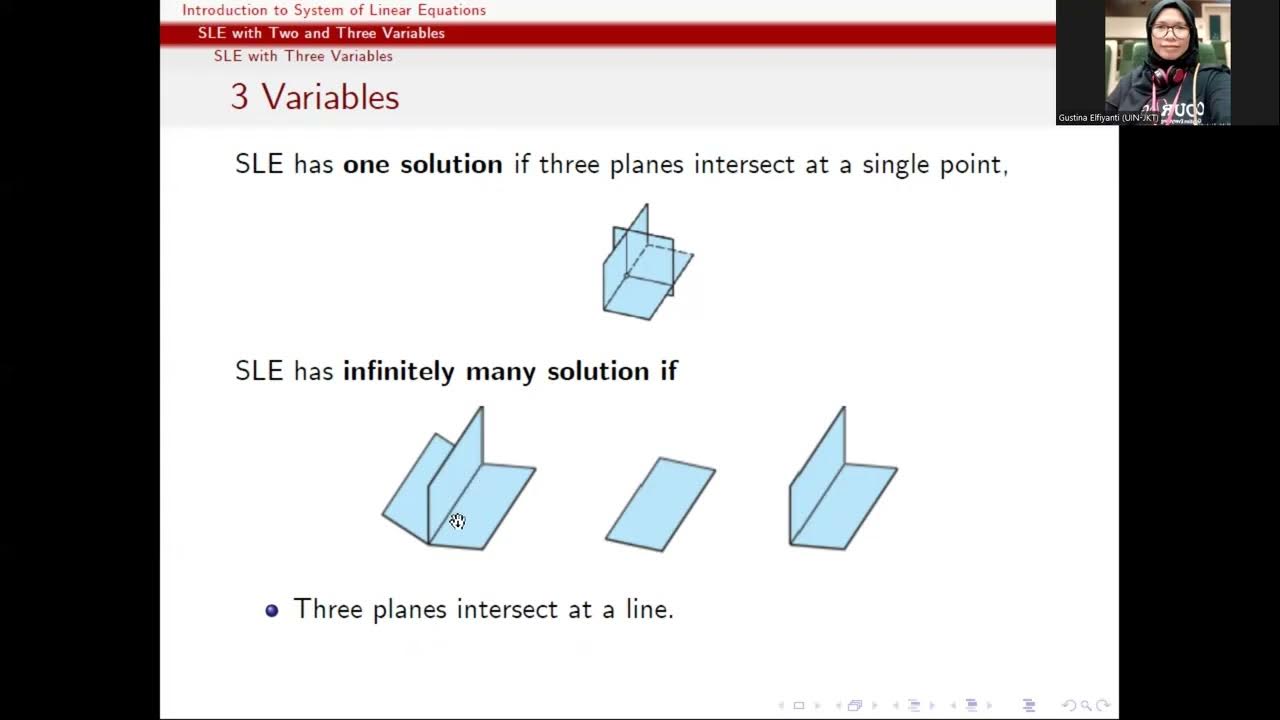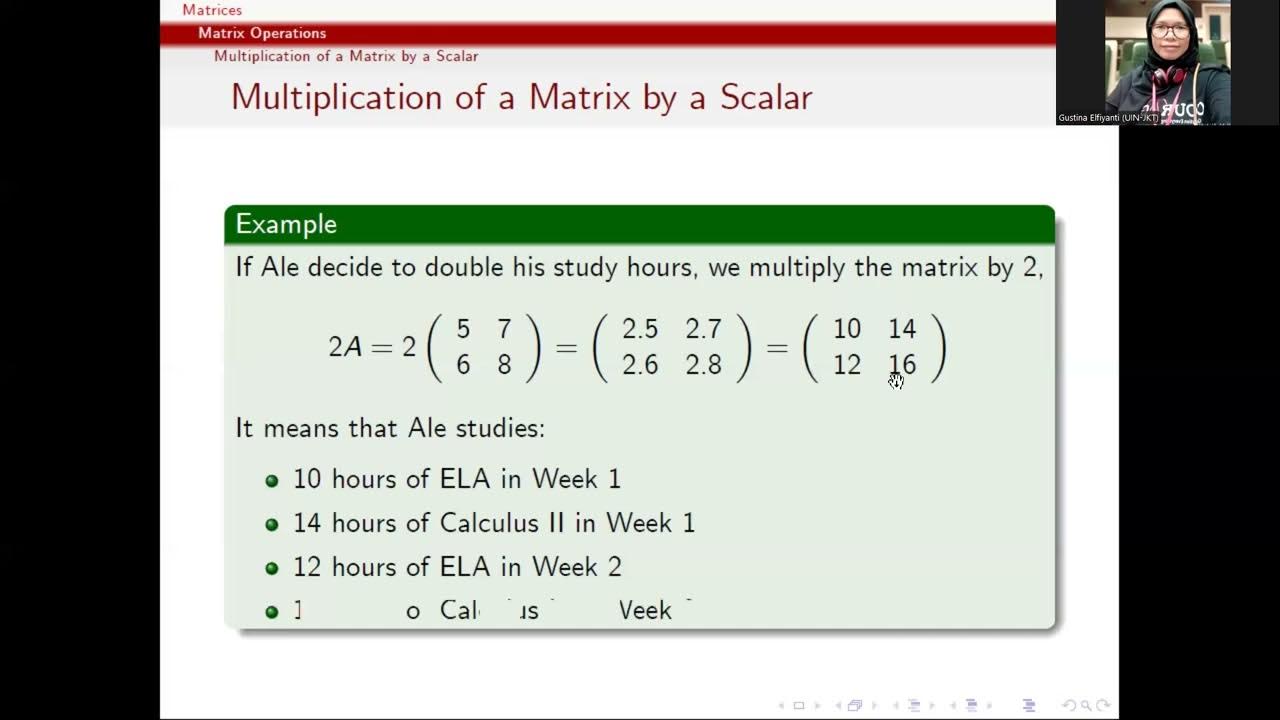Partitioned Matrices
Summary
TLDRIn this lecture on Elementary Linear Algebra, the concept of partitioned matrices is explored, demonstrating how partitioning matrices into smaller sub-matrices (called blocks) can simplify complex matrix operations. This technique is particularly useful for large-scale computations, such as matrix multiplication, system of linear equations, and image processing. The lecture also highlights the practical applications of partitioned matrices in fields like parallel computing, scheduling, and machine learning. Various examples, including product cost calculations in retail and matrix transformations in computer graphics, showcase how these concepts can be applied in real-world scenarios.
Takeaways
- 😀 Partitioning a matrix divides it into smaller submatrices, making complex calculations simpler and more manageable.
- 😀 Matrix partitioning is particularly useful in computational applications, such as parallel computing and image processing, where large matrices need to be handled efficiently.
- 😀 Matrix multiplication can be broken down into smaller operations by partitioning matrices into blocks, allowing for faster and more structured computations.
- 😀 Instead of multiplying entire matrices, you can multiply them column-by-column or row-by-row, saving time and computational resources.
- 😀 Matrix multiplication is equivalent to performing linear combinations of the columns or rows of matrices, with the coefficients coming from the corresponding entries of the other matrix.
- 😀 A real-life application of matrix multiplication is in scheduling systems, where different cohorts or groups (such as students) are represented by partitioned matrices.
- 😀 The transpose of a matrix swaps rows and columns, and is useful in operations like rotating images, which is a common application in computer graphics.
- 😀 The trace of a matrix is the sum of its diagonal elements, which can be used in network connectivity analysis, such as identifying terminal stations in a transportation system.
- 😀 In retail, matrix multiplication can be used to calculate total revenue by multiplying price matrices with quantity matrices, providing an efficient way to manage sales data across multiple locations.
- 😀 Matrix operations are foundational in linear algebra, with wide applications in fields such as computer science, engineering, finance, and machine learning.
Q & A
What is a partitioned matrix and how is it useful?
-A partitioned matrix, also known as a block matrix, is a matrix divided into smaller sub-matrices or blocks. This technique simplifies complex calculations, especially in linear algebra and computational applications, by breaking down large matrices into manageable parts.
How can a 3x4 matrix be partitioned?
-A 3x4 matrix can be partitioned in various ways. It can be split into column vectors (C1, C2, C3, C4), row vectors (R1, R2, R3), or smaller sub-matrices such as A11, A12, A21, and A22.
What is an example of partitioned matrices in scheduling?
-In scheduling, a secretary managing class schedules for multiple cohorts (first to fourth year students) can represent the schedules as a partitioned matrix. Each block in the matrix would represent the schedule for a different cohort.
Why is block matrix multiplication important in computational fields?
-Block matrix multiplication simplifies large matrix calculations by treating certain blocks as single elements. It is particularly useful in parallel computing, where different blocks can be processed simultaneously, and in applications like image processing.
What is the advantage of performing matrix multiplication row-by-row or column-by-column?
-Performing matrix multiplication row-by-row or column-by-column is more efficient when we only need to compute specific rows or columns of the resulting product, saving time and computational effort.
How can matrix multiplication be viewed as a linear combination?
-Matrix multiplication can be interpreted as a linear combination of the rows or columns of a matrix. For example, multiplying a matrix by a vector results in a linear combination of the matrix’s columns, with coefficients coming from the vector.
What is the significance of the trace of a matrix?
-The trace of a matrix is the sum of its diagonal elements. It is used in various applications, such as in graph theory and network analysis, to provide insights into the matrix's structure.
Can you explain how matrix multiplication is used in business revenue calculations?
-In a business context, matrix multiplication can be used to calculate total revenue by multiplying a price matrix (showing the prices of products in different cities) with a quantity sold matrix (showing units sold in each city). The product gives the total revenue in each city.
What is the transpose of a matrix and how is it used in image processing?
-The transpose of a matrix is obtained by swapping its rows and columns. In image processing, transposing a matrix is part of rotating an image by 90 degrees clockwise, followed by reversing the rows to complete the rotation.
How is a system of linear equations related to matrix multiplication?
-A system of linear equations can be represented as a matrix equation. The matrix form of a system of equations simplifies the process of solving it. For example, the equation Ax = B represents a system where A is a matrix, x is the vector of variables, and B is the result vector.
Outlines

This section is available to paid users only. Please upgrade to access this part.
Upgrade NowMindmap

This section is available to paid users only. Please upgrade to access this part.
Upgrade NowKeywords

This section is available to paid users only. Please upgrade to access this part.
Upgrade NowHighlights

This section is available to paid users only. Please upgrade to access this part.
Upgrade NowTranscripts

This section is available to paid users only. Please upgrade to access this part.
Upgrade Now5.0 / 5 (0 votes)





